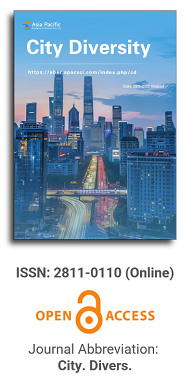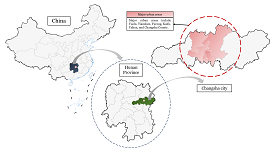
Asia Pacific Academy of Science Pte. Ltd. (APACSCI) specializes in international journal publishing. APACSCI adopts the open access publishing model and provides an important communication bridge for academic groups whose interest fields include engineering, technology, medicine, computer, mathematics, agriculture and forestry, and environment.

As China's pillar industry, the property market has suffered a considerable impact in recent years, with a decline in turnover and many developers at risk of bankruptcy. As one of the most concerned factors for stakeholders, housing prices need to be predicted more objectively and accurately to minimize decision-making errors by developers and consumers. Many prediction models in recent years have been unfriendly to consumers due to technical difficulties, high data demand, and varying factors affecting house prices in different regions. A uniform model across the country cannot capture local differences accurately, so this study compares and analyses the fitting effects of multiple machine learning models using February 2024 new building data in Changsha as an example, aiming to provide consumers with a simple and practical reference for prediction methods. The modeling exploration applies several regression techniques based on machine learning algorithms, such as Stepwise regression, Robust regression, Lasso regression, Ridge regression, Ordinary Least Squares (OLS) regression, Extreme Gradient Boosted regression (XGBoost), and Random Forest (RF) regression. These algorithms are used to construct forecasting models, and the best-performing model is selected by conducting a comparative analysis of the forecasting errors obtained between these models. The research found that machine learning is a practical approach to property price prediction, with least squares regression and Lasso regression providing relatively more convincing results.
Ants associated with dry forest fragments and urban environments in Santa Marta, Colombia
Vol 5, Issue 1, 2024
Download PDF
Abstract
A publicly accessible database of ants associated with dry forest fragments and urban environments in Santa Marta, Colombia, is presented through the Colombian Biodiversity Information System (SIB). Capture methods included the installation of pitfall traps, protein and carbohydrate baits, extraction by the Winkler method of ants associated with leaf litter and manual collection of ants foraging on tree vegetation. The dataset contains 54 323 records, distributed in seven subfamilies, 42 genera, 88 species and nine morphospecies. This list is a tool to encourage the study and conservation of ants in urban areas.
Keywords
References
- Turrini T, Knop E. A landscape ecology approach identifies important drivers of urban biodiversity. Global Change Biology. 2015; 21(4): 1652-1667. doi: 10.1111/gcb.12825
- McKinney ML. Urbanization, Biodiversity, and Conservation. BioScience. 2002; 52(10): 883-890. doi: 10.1641/0006- 3568(2002)052[0883:UBAC]2.0.CO; 2
- MacGregor-Fors I, Zuria I. Living cities: Biodiversity in urban environments. Universidad Autónoma del Estado de Hidalgo; 2019. pp. 113–127.
- Chacón de Ulloa P, Montoya-Lerma J, Abadía JC, et al. Urban ants. National University of Colombia; 2019. pp. 1171–1185.
- Blüthgen N, & Feldhaar H. Food and shelter: How resources influence ant ecology. Oxford University Press; 2010. pp. 115– 136.
- Dáttilo W, MacGregor-Fors I. Ant social foraging strategies along a Neotropical gradient of urbanization. Scientific Reports. 2021; 11(1). doi: 10.1038/s41598-021-85538-2
- Angilletta MJ, Wilson RS, Niehaus AC, et al. Urban Physiology: City Ants Possess High Heat Tolerance. Chown S, ed. PLoS ONE. 2007; 2(2): e258. doi: 10.1371/journal.pone.0000258
- García H, González R. Dry forest Colombia: Biodiversity and management. Alexander von Humboldt Biological Resources Research Institute; 2019.
- Fontalvo-Rodríguez L, Solís-Medina C. Ant (Hymenoptera: Formicidae) assemblage in dry forest fragments in the El Cerrejón carboniferous complex (La Guajira, Colombia). Revista Intropica. 2009; 4: 5-15.
- Ramos LM. Diversity of ants in urban environments of the city of Santa Marta (Technical report). Vice-rectorate of Research, Universidad del Magdalena; 2021.
- Urban Geography. Plan de ordenamiento territorial Santa Marta formulation document. Mayor’s Office of Santa Marta; 2020.
- Rangel JO, Carvajal-Cogollo JE. Climate of the Colombian Caribbean region. National University of Colombia; 2012. pp. 67–129.
- Carbonó-Delahoz E, Barros-Barraza A, Jiménez-Vergara J. Cactaceae from Santa Marta, Magdalena, Colombia (Spanish). Revista de la Academia Colombiana de Ciencias Exactas, Físicas y Naturales. 2014; 37(143): 177. doi: 10.18257/raccefyn.2
- Hernández-Camacho J, Sánchez H. Terrestrial biomes of Colombia. Instituto de Ecología, A.C., Secretaría de Desarrollo Social; 1992. pp. 153–173.
- Barranco Pérez W, Castellanos Barliza J, León Peláez JD. Ecological Evaluation of an Urban Fragment of Dry Forest (Spanish). Universidad del Magdalena; 2019.
- Guerrero R, Delsinne T, Dekoninck W. Collection methods and curation. In Ants of Colom-bia. National University of Colombia; 2019. pp. 319–369.
- Fernández F, Guerrero R, & Delsinne T. Ants of Colombia. National University of Co-lombia; 2019.
- Hoenle P, Lattke J, Donoso D, et al. Odontomachus davidsoni sp. nov. (Hymenoptera, Formicidae), a new conspicuous trapjaw ant from Ecuador. ZooKeys. 2020; 948: 75-105. doi: 10.3897/zookeys.948.48701
- Camargo-Vanegas JJ, Guerrero RJ. Pheidole ants (Formicidae: Myrmicinae) in the tropical dry forest of Santa Marta, Colombia (Spanish). Revista Colombiana de Entomología. 2020; 46(2): 1-22. doi: 10.25100/socolen.v46i2.8433
- Fernández F, Guerrero R, & Delsinne T. Phylogeny and systematics of neotropical ants. National University of Colombia; 2019. pp. 57–89.
- García EI, Tocora MC, Fiorentino G, et al. New records of ants (Hymenoptera: Formicidae) for Colombia. Biota Neotropica. 2020; 20(4). doi: 10.1590/1676-0611-bn-2020-1088
- Dekoninck W, Wauters N, Delsinne T. Invasive ants in Colombia. National University of Colombia; 2019. pp. 1149–1169.
Supporting Agencies
Copyright (c) 2024 Lina María Ramos Ortega, Hubert Sierra, Johan D. Roncallo, Roberto J. Guerrero

This work is licensed under a Creative Commons Attribution 4.0 International License.

This site is licensed under a Creative Commons Attribution 4.0 International License (CC BY 4.0).

Prof. Mehmet Cetin
Kastamonu University,
Turkey
Polish Scientific Bibliography

